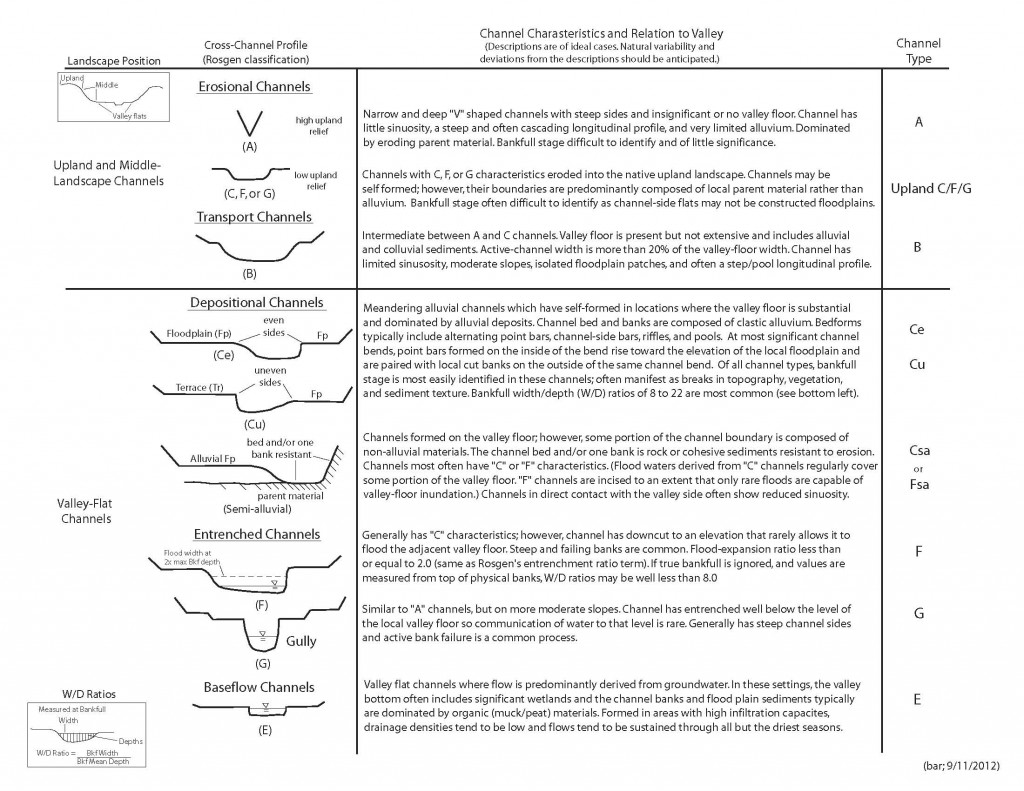For more than 20 years, Dave Rosgen has developed and presented through a series of journal articles, a book entitled Applied River Morphology, and numerous workshops, a stream classification system that is both widely used, and often debated, by environmental scientists working in the realm of streams and rivers.
Based upon a series of in situ physical measurements, channels are divided into broad types designated by letters (A, B, C…) which are further refined with the association of a number (1, 2, 3…6) based upon most prevalent channel materials (e.g. sand, gravel, cobble…). For example, a channel may be labeled as a C4; a classification label that speaks to its form in terms of slope, sinuosity, width/depth ratio, and a series of other measurements as well as the size fraction that’s makes up a majority of the channel sediments. While many students of this system often speak of its usefulness as a communication tool, it seems appropriate to consider, and perhaps refine, this system for Indiana streams based upon the efforts and numerous observations of Indiana streams collected by the Indiana FEH team.
For the benefit of those working to describe and understand Indiana stream channels, a summary sheet regarding Indiana channel types has been prepared (see below) with the goal of developing a handout that would provide a simple summary of the dominant characteristics common to Indiana channel types as well as introduce a few channel types, slightly modified from the Rosgen system, that the Indiana FEH team believes to be more consistent with observations collected in Indiana streams.
When using the sheet below, one should begin on the left-hand side and first identify the position of the channel within the landscape. Upland and mid-landscape channels appear in the top third of the page, while channels located within the valley flat are presented in the larger bottom section. One should then look at the position of the channel within its landscape setting, the dominant function of the channel, and its general form. With these observations, and the descriptions provided on the channel-summary sheet, one should be able to identify the Indiana channel type that best fits the channel of interest in most settings.
To a large extent, the channel types found in Indiana can also be placed within the context of FEH concerns. The figure below was developed to summarize some of these concepts. The lower right-hand portion of the figure places artificial and highly modified channels in the context of FEH concerns. The remainder of the figure serves the same purpose in the context of more natural channels. The left-hand side of the figure applies to channels where discharge is largely driven by runoff whereas the upper right-hand portion applies to channels fed primarily by groundwater.
For each of the eight channel types shown in this figure, a general description of common channel characteristics and an indication of the likelihood of each being associated with FEH concerns is presented. As this figure illustrates, those channels that are categorized as C-type are often associated with the greatest potential for FEH concerns.

